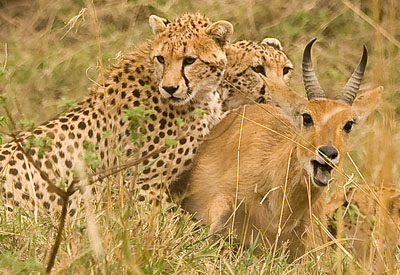Question of the Month
November 2009
Where can I find references for Depths of Field?
Purely by coincidence, this month's Question of the Month dove-tails nicely with our Tip of the Month, as both deal with depths of field. From our experience teaching photography we know that there is a bit of confusion about depth of field and hyperfocal distance, and many photographers use these terms inaccurately and interchangeably.
There is a series of very nifty little guides that can clarify all of these issues, and more. Produced by FotoSharp, a series of 3x5 plastic-covered cards that address a huge range of subjects. A few of those cards, and a nifty slide-rule type scale, directly address Depth of Field and also Hyperfocal distances.
I must admit that in the heat of the moment I wouldn't have the time, nor wish to take the time, to consult a card, but the cards are a great primer and reference, and, when you do have the time, they are an invaluable reference.
Using the Depth of Field Guide and referring to my cheetah/reedbuck photos, I discovered some interesting facts. I'm guessing I was about 50 feet from the cheetahs and reed buck, and my lens was set at 110mm at f4.

Using the Guide, and matching the scale with the nearest focal length listed, which was 105mm, I discovered that my depth of field at f4 was about 15 feet, extending from just shy of 45 feet and reaching to nearly 60. The Depth of Field Guide doesn't cover a 500mm lens, but I could refer to 300mm and estimate from there. At 300mm, at the same working distance, my depth of field at f4 would have been less than 2 feet, from slightly greater than 49 feet to just shy of 51 feet.
Had I used a 300mm that depth might have been sufficient for the coverage, but my choice (if you read the Tip) was between a 500mm or my zoom. I'm guessing that with the 500mm the depth of field would have been less than 1 foot, so either the reed buck or the cheetahs would have been in focus, not both. Now, I know enough about photography to assume these figures, but its nice to see it in black and white, too.
In addition to the Depth of Field Guide, which I've referred to for this Tip, FotoSharp has cards for depths of field for various magnification ratios for lenses from 50 to 400mm, from a ratio of 1:12 (that's 1/12th life-size) to 1:1 (or life-size). For example, with a 400mm the approximate focusing distance necessary for 1:1 is 2' 7".
FotoSharp has Hyperfocal Distance charts for full-frame sensors, 1.3 sensors, and Olympus digital cameras, night photography guidelines, landscape, portrait, composition tips, etc. One that I really liked was an 'Intentional Blur' card which gives the amount of blur, blur length, at particular shutter speeds for a given mph.
For example, a running wolf is going at least 20mph, and at 1/30th of a second the blur would be 1 foot. At 1/15th it's 2 feet, and at 40mph and 1/30th it's 2 feet. Knowing this, one can do a very effective pan-blur to streak a background for a desired look.
For more information on the FotoSharp cards, contact:
or
Robert J. McCabe
FotoSharp
17837 1st Avene S#1
Seattle, WA 98148 (800) 361-8341
Questions of the Month
What is the Kiboko backpack? Is it the New Best Pack?
Is there a correct position for the upright on a Wimberley actionhead?
How, Who, and Why? The story behind our new web site.
Archived Questions of the Month
Most of my original Questions of the Month for the last several
years are available through this link. The 'look' is from my
original web site, although if I ever have enough time I might
redo these pages to match the new web site But that's not
a high priority.


